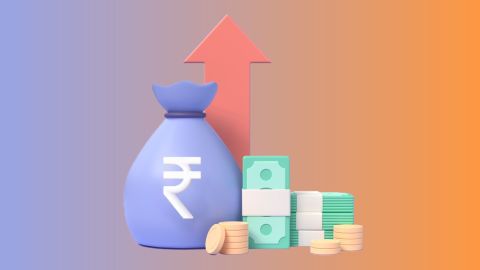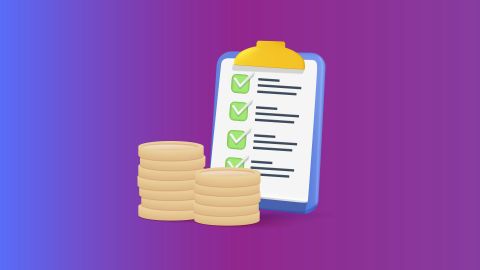Importance of Business Models
A well-planned business model is key to the success and long life of any business. Here’s why it matters:
- Gives clear direction
A good business model guides the company’s plans and decisions, helping everyone work towards the same goal.
- Builds a competitive advantage
A creative and different business model helps a company stand out from its competitors and stay ahead in the market.
- Helps use resources wisely
With a clear model, it’s easier to focus time, money, and effort on the most important areas of the business.
- Attracts investors
A solid business model shows that the business has potential to grow, making it easier to get investment and funding.
- Adapts to market changes
A flexible model allows a business to change with the market, meet customer needs, and keep up with new technology.
- Tracks progress
It helps set goals and measure success through performance indicators, so the business stays on track.
- Supports growth
A strong business model can be expanded to new areas or markets, helping the business grow faster.
Types of business models
There are five main types of business models:
- Business to consumer (b2c)
This involves a business selling directly to individual customers. It can include online sales, physical stores, or both.
- Direct to consumer (dtc)
A form of b2c where the manufacturer or brand sells directly to customers, rather than through retailers. This model often uses online platforms for sales.
- Business to business (b2b)
This is commerce between two businesses, such as supplying goods or services in bulk. Many companies use both b2b and b2c models.
- Consumer to consumer (c2c)
This peer-to-peer model allows individuals to sell goods or services to other individuals, often via online marketplaces.
- Consumer to business (c2b)
Here, individuals offer products or services to businesses. This could include freelancers, consultants, or creators who work for or supply businesses.
Pros and cons of different business models
Business model
|
Advantages
|
Disadvantages
|
Subscription model
|
- Regular and predictable income
- Builds long-term customer relationships
- Good chance to offer more services to existing users
|
- High cost to bring in customers
- Risk of customers cancelling
- Must keep adding value to keep users
|
Freemium model
|
- Attracts a large number of users
- Lets users try before they pay
- Can grow quickly through recommendations
|
- Few users may convert to paid plans
- Costly to support free users
- Too few features may push users away
|
Marketplace model
|
- Easy to scale
- Low cost as no need to manage stock
- Can grow fast with more buyers and sellers
|
- Relies on third-party sellers
- Needs strong checks for quality
- High competition from similar platforms
|
Franchise model
|
- Can expand quickly
- Business risk shared with franchise owners
- Offers same brand experience everywhere
|
- Less control over each outlet
- Possible disputes between owner and franchisee
- Poor service at one location can harm brand
|
Pay-as-you-go model
|
- Customers only pay for what they use
- Pricing is flexible
- Can attract heavy users
|
- Earnings are not stable
- Needs accurate tracking and billing
- May lead to low profit per customer
|
How to build a business model
There is no single method that works for everyone when it comes to creating a business model. Different people may follow different steps, depending on their goals and business type. However, here are some general steps you can follow to build a solid business model:
1. Identify your audience
Start by understanding who your customers are and what problem you are solving for them. A strong business model focuses on the target audience, helping you design your product, communication, and approach to meet their needs.
2. Define the problem
It’s important to be clear about the issue or need your business is addressing. Whether you're offering a product or service, there must be a clear demand for it. If there’s no real problem being solved, the business may struggle to grow.
3. Understand your offerings
Once you know your audience and the problem, think about what you can offer to solve it. Consider the products or services you want to sell and how well your skills or experience match. You may need to adjust your offering based on what the market wants and what you can realistically deliver.
4. Note down your requirements
Now that you've chosen your product or service, list out the challenges you may face. This could include production issues, logistics, or daily operations. Writing down these needs will help you prepare better before launching.
5. Identify key partners
Most businesses rely on others to grow. You might need suppliers, service providers, or local vendors to support your business. Building good relationships with these partners can strengthen your offering and improve customer satisfaction.
6. Plan how to earn money
A business model must clearly explain how the business will earn income and become profitable. Choose the right way to make money—whether by selling directly, offering subscriptions, or through other methods.
7. Test your model
Once your plan is ready, try it out on a small scale. You could take feedback through surveys, offer limited-time discounts, or run a soft launch. Real feedback from customers will help you improve your model before a full launch.
Examples of business models
Business models are the blueprints that guide a company's operations, revenue generation, and value proposition. They encapsulate the essence of how a business creates, delivers, and captures value. Here are a few examples of widely adopted business models:
- Subscription model: Customers pay a recurring fee for access to products or services, fostering loyalty and providing a predictable revenue stream.
- Freemium model: Basic services are offered for free while premium features are charged for, enticing users to upgrade and generating revenue.
- E-commerce model: Leveraging online platforms to sell products directly to consumers, eliminating the need for physical storefronts and expanding reach.
These examples highlight the diversity and adaptability of business models in meeting market demands and driving profitability.
Difference between business model and business plan
Both a business model and a business plan are important for any business, but they are not the same. They have different goals and uses. Here’s a simple comparison:
Business model
|
Business plan
|
Explains how a business creates and earns value
|
Explains how the business will run and manage its finances
|
Covers key parts of the business like what is being offered, who it’s for, how money will be made, and costs involved
|
Includes detailed info about products or services, marketing, financial plans, and the team
|
Gives a simple overview of how the business will operate and earn income
|
Gives a step-by-step plan on how to make the business idea work
|
Used as a strategy tool to guide decisions and explain how value will be created
|
Used to get funding, attract investors, and manage daily work
|
Can be updated often based on market trends or customer feedback
|
More fixed and used to track business performance over time
|
Usually shorter and to the point
|
Usually longer and more detailed, sometimes many pages
|
How a Business Loan Supports Your Business Model
Implementing a business model requires financial resources, and Bajaj Finserv Business Loan can help in securing funding to establish or expand your business. Our loan offers several benefits, including competitive business loan interest rates, high loan amounts up to Rs. 80 lakh, and collateral-free financing that makes it easier for you to launch your business or expand operations. With a flexible repayment tenure of up to 96 months, you can also tailor your repayment schedule to your financial capacity.
Here are some ways a business loan from Bajaj Finance can help with a business model:
- Launching a new business: Our business loan can provide funds for the necessary equipment, staff, or facilities to establish a new business model.
- Adapting to changes: In adapting to shifting market dynamics, you might often find the need to adjust your business strategy. Our business loan stands ready to offer the essential financial support required for seamlessly navigating and embracing these changes.
- Expanding operations: In cases where you are experiencing growth opportunities, such as expanding into new markets or adding new product lines, our business loan can be used to fund these ventures.
- Testing new ideas: Our business loan can be used to test new products or services that can complement an existing business model.
- Upgrading technology: With our business loan, you can access the funds necessary to purchase new technology that can optimise existing business models.
Conclusion
A business model is a critical component of any business, and choosing the right one can be key to the long-term success of the business. Bajaj Finserv Business Loan can help you implement and grow your business models by providing the necessary financial resources. Our loan offers several benefits, including high loan amounts, competitive interest rates, and flexible repayment tenure. If you are an entrepreneur looking to establish or expand your business, consider availing of Bajaj Finserv Business Loan, and take the first step towards realising your entrepreneurial dream.






